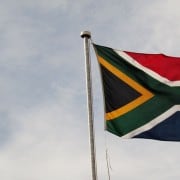|
Getting your Trinity Audio player ready...
|
By Janine Erasmus
Nepotism, patronage, irregular contracts, rent-seeking. Many people today erroneously associate these corrupt activities only with the current government and yet, corruption in South Africa existed long before 1994. It is fair to say that those who openly yearn for pre-ANC, pre-corruption days are yearning for something that never existed.
As UJ political studies professor Steven Friedman compellingly puts it, “few seem to know that it is perhaps the country’s oldest tradition.”
This in no way undermines the very real and legitimate concerns that people have about present-day corruption in the private and public sectors. In 2020, with the outbreak of Covid-19, government’s relaxed emergency procurement regulations prompted a surge of corruption from public servants seizing an easy opportunity and private companies who suddenly decided they were in the business of selling personal protective equipment (PPE), despite not having even ever touched a mask before.
But as distasteful as it is, none of this is new. Nor is there a quick-fix solution.
Dr Sithembile Mbete, a senior lecturer in South African politics at Pretoria University, tells Corruption Watch that the apartheid years set a precedent and standard for the middle to upper class that is not sustainable in democratic South Africa. “It was a system that needed to rely on the exploitation of working-class people in general and black people in particular. And instead of undoing that system in 1994 they just kept it going … the right of a certain class or having a certain lifestyle or being a professional. The reality is that just as it was then, it’s not sustainable or possible now – especially in a country as skewed as ours.”
In the post-apartheid era, she adds, being corrupt makes it easier to achieve that standard of life, but at a cost, and at the expense of many. “Resources are scarce. Resources just don’t work like that.”
Long-standing corruption challenges
Corruption was entrenched not in the democratic years, but in the apartheid years, experts agree.
In its revealing report, Joining the Dots: The Long Shadow of Economic Crime in South Africa, the Open Secrets organisation argues that: “There is a growing recognition among South Africans that contemporary challenges of corruption and state capture are deeply rooted in our history. The white apartheid state was itself captured by private networks that saw opportunity to profit from oppression.”
Open Secrets released the report to coincide with the sitting of the People’s Tribunal on Economic Crime, for which Corruption Watch was part of the organising committee.
The tribunal panel found that in the three specific eras of South African history that were under scrutiny, there was enough evidence to warrant a thorough investigation into economic crimes both past and present. The three periods were apartheid, the arms deal, and present-day state capture.
However, corruption existed and was practised long before apartheid’s arrival in 1948.
Friedman goes back much further than Joining the Dots. He says, “In reality, corruption has been a constant feature of South African political life for much of the past 350 years. It is deeply embedded and it will take a concerted effort, over years, not days, to defeat it.”
This is a widely accepted view. In a 1997 paper titled Political corruption in South Africa, Tom Lodge, former professor of political studies at Wits, says: “Corruption becomes systemic when corrupt activity begins to appear at all levels within a political system and when it becomes repetitious, constituting a parallel set of procedures to those which properly constitute the formal functions of the bureaucracy.”
As an example, when the social grants payments crisis unfolded a few years ago, an investigation was chaired by Judge Bernard Ngoepe into the conduct of then minister of social development Bathabile Dlamini. Specifically, Ngoepe was probing whether Dlamini had personally ordered the appointment of individuals to lead work streams which ran parallel to the South African Social Security Agency’s (Sassa) normal processes but reported directly to her.
Ngoepe’s report found that in 2016, she had done just that. The streams were to implement the fanciful recommendations of an advisory committee that Sassa set up its own in-house grant payment system. While reporting directly to Dlamini, the employees were to be paid from Sassa funds – a move that the National Treasury blocked for around a year. The Treasury later determined that the work streams were irregularly appointed and furthermore, had cost the country nearly R50-million.
Routine and open petty corruption, explains Lodge, usually signifies a “systemic condition of corruption; secretive grand corruption may exist despite the absence of more pervasive bureaucratic misbehaviour.”
The result is that in administrations in which corruption becomes systemic and epidemic, the ever-increasing scale of misappropriation substantially reduces public expenditure on development and services, which means that people are denied the most basic of services.
Corruption begets corruption
How did we get to this stage? To even begin to understand, it’s necessary to go back three and a half centuries.
When Jan van Riebeeck landed at the Cape of Good Hope in 1652, it was thanks to a second chance from the Dutch East India company, which had dismissed him in 1648 for using company resources to do private business. This is a telling sign of Van Riebeeck’s work ethic – and a taste of how things would work in government from then on, because his administration was marked by tax evasion and corruption by public officials, says Friedman.
Van Riebeeck also set about appropriating land from indigenous residents, despite their protests and resistance.
Worse was to come. During British rule, which lasted from 1795 to 1931 with a three-year break from 1803 to 1806, public spending was diverted to serve private interests, Friedman notes. One well-known example of such irregular spending is the 18-year monopoly catering contract that James Sivewright, minister of railways and a Cecil John Rhodes crony, gave to his friend James Logan for the entire Cape railway network. Because Sivewright had not followed proper procurement processes there was a huge outcry which eventually led to cancellation of the contract, Rhodes’ resignation as prime minster, and the fall of his government.
Friedman further describes the Afrikaner South African Republic of Paul Kruger as “riddled with nepotism and economic favours for the connected. The British administration which replaced it served the interests of mine owners on whom it bestowed special privileges. What today is called ‘state capture’, the use of the state to serve private interests, was common to Afrikaner and British rule.”
In his 2006 article Political Corruption: Before and after Apartheid, Prof Jonathan Hyslop of the Wits Institute for Social and Economic Research also harks back to the era of the South African Republic. He examines Kruger’s patronage networks, saying that Kruger developed economic policies that would offer new rent-seeking opportunities to members of those networks, such as granting manufacturing concessions to those who supported the republic.
Given the decades-long entrenchment of corrupt practices, says Friedman, it is not surprising that corruption was a constant feature of the apartheid period, with politicians and officials using government power for personal gain.
“The most corrupt period in the country’s history was the last few years of apartheid, when the attempt to combat the successful international sanctions campaign made corruption, protected by government secrecy, the core government strategy. This was often done with the collusion of private businesses.”
Joining the Dots comes in at this point with its analysis of the late apartheid era under the UN arms embargo, the 1999 arms deal, and contemporary state capture periods.
Significantly, the tribunal panel noted the emergence of strong evidence that the failure to address the economic crimes and sanctions violations of the apartheid era “in part explained the illicit activities later in the arms deal and in contemporary state capture”.
The Joining the Dots report supplements the work of the panel. It concludes by saying: “The interests of elites and some of their crimes span time; if we don’t recognise this, they will always be one step ahead of accountability efforts.”
It’s important to accept that all of this is a broad overview that merely scratches the surface.
The scholarly view
In terms of directly comparing the pre- and post-1994 administrations, Hyslop argues that this debate is simplistic, because the two forms of government are different – one is a democracy and the other a racial oligarchy – and therefore “sensible comparisons” are hard to come by. His article, he states, “aims to analyse how the administrative and political legacies brought to the present by both the old South African state structures and the new political leadership produce such varying types of corruption.”
In the decade from 1984 to 1994, Hyslop points out, “once it became clear that the end of white rule was at hand, there was a rush to grab as much in the way of spoils as possible before the curtain came down.” This ties in immaculately with Friedman’s statement describing the last years of apartheid as the country’s most corrupt period.
Hyslop concludes that: “Corruption was widespread in the Kruger era, but was substantially contained by the creation of a modern bureaucracy under Milner. Patronage politics and the facilitation of rent-seeking activity played a large part in the building of Afrikaner nationalism. But it only crossed the line into massive overt corruption from the 1970s.”
Furthermore, he says, the ANC itself brought to the task [of governing] an enthusiasm and high hopes for the future, but also a political culture that made it difficult to admit to and tackle corruption problems when they arose. “The construction of a new economic elite also created a context in which corruption was likely to flourish.”
In his Political corruption in South Africa paper, Lodge argues that ‘… though old habits and predispositions may well sustain much of the existing administrative corruption, its apparent expansion is also the consequence of change’.
What he means is that while the previous regime was indeed beset by numerous forms of corruption, “new ones have been layered on to them. Two very different political orders produce very different types of corruption and what we need to do is identify and account for these types.”
A grim inheritance of corruption
Corruption was extensive in the apartheid regime and while some of the conditions which allowed it to flourish have disappeared – no more homeland administrations and their corruption and abuse of power, for one – there are many new sources of stimulation for corrupt behaviour, writes Lodge.
These include non-merit-based recruitment and promotion, skills shortages in the public sector, new sources of public finance such as foreign development aid, tendering principles which favour small businesses, the requirement of having black business partners to win contracts offered under BEE principles, and an expansion of citizen access and entitlements to public resources.
Like Mbete, Friedman also names societal pressures as a contributing factor. During the fading days of apartheid, he states, “It was widely assumed that the ANC would soon govern but its senior officials lacked the means to live the lifestyle expected of people of standing. Businesses, for motives both pure and impure, stepped in to help with cars, homes and private schools.”
Corruption has, therefore, been used by some of those who want to enjoy the dominant role played by previous business classes whose group controlled the state, Friedman adds.
Furthermore, corruption is also a symptom of the difficulties facing new entrants into the economy. “Some turn to politics to achieve the middle- or upper-middle class life they are denied by an economy they cannot penetrate, no matter how hard-working and enterprising they are. It therefore answers a widespread need, which may explain why the corrupt networks are deep-rooted, particularly at the local and provincial level.”
The private sector is and has been white-dominated, says Mbete, and has been reluctant to open up to other people and to create real opportunities. “For black businesses who have legitimate services and products to sell, it’s been immensely difficult to break in [to the private sector]. So they rely on government to be their main customer, but then the competition for government businesses and services is such that you need to compete on the basis of patronage and paying bribes.”
If the private sector was more accessible, she adds, we wouldn’t have some of these issues.
“So many people are excluded, regardless of their qualifications or the product they sell, so in many cases they are at the mercy of unscrupulous people to get access, to know someone. We see this at the lowest level, for instance with the selling of government jobs where people are not hired on the basis of merit. You also see it in business because if you don’t have the right access or haven’t grown up in the right neighbourhood you’re excluded from opportunities. And so people have had to find opportunity elsewhere.”
The more things change …
Since Lodge wrote his paper, not much has changed. He points to the erstwhile Department of Welfare, known since 2000 as the Department of Social Development, whose problems “are mainly attributable to the legacy of pre-1994 era. The department inherited 14 separate bureaucracies, many of them very venal and extremely incompetent.”
Lodge details, among others, a scandal that involved a high-level welfare official and an irregular tender given to a private company contracted to distribute pension funds – a scenario eerily reminiscent of the relationship between Sassa and Cash Paymaster Services.
Back then he also wrote about police corruption, describing that law enforcement institution as rivalling the corrupt pension administrators in the erstwhile Department of Welfare, known since 2000 as the Department of Social Development, in its predisposition towards corruption. Lodge also mentions the national school feeding scheme, which has “supplied rich pickings nation-wide for minor officials, school administrators and small contractors in most of the provinces” – keeping in mind that his paper was written 23 years ago, we see the same sad situation still today.
The parastatal sector has also supplied rich seams of official corruption, Lodge adds. Transnet, the Post Office, Eskom – the same old culprits. And the Zondo commission into state capture brings new allegations of mismanagement, nepotism, abuse of power, and flouting of procedures on a daily basis.
These are just a few examples of the many he details, and they are all still problematic today.
But as Friedman says, “Deep-rooted problems created over centuries demand thorough-going solutions which will take time to work. While this requires more patience and understanding than the national debate seems willing to offer, the alternative is many more years of public railing at corruption while the problem remains because its causes have been ignored.”
Besides tackling the physical causes and manifestations of corruption, Mbete says, South Africans need a fundamental shift in their definition of what it is to live the good life. “We have this this attitude of not sharing the common resources but rather of capturing the common resources for yourself. It’s also this very exclusionary view of what an economy looks like or what economic activity needs to be, keeping out as many people as possible instead of the acknowledgement that if we all are included then then we can all benefit.”








